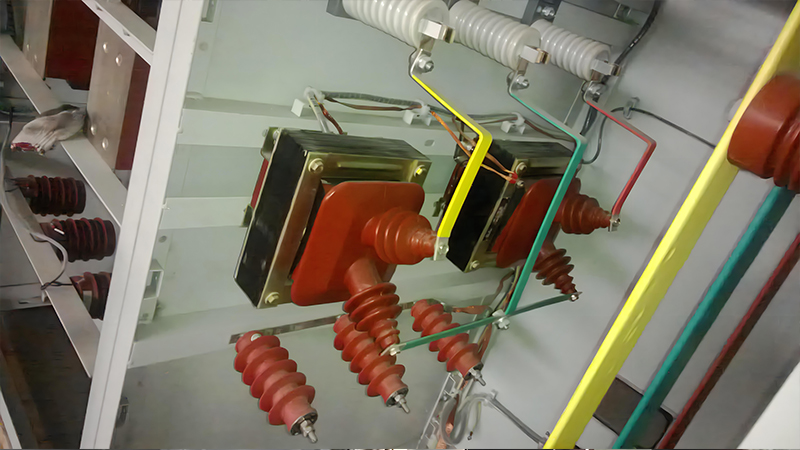Related Products
Working principle of voltage transformers
Its working principle is the same as that of a transformer , and its basic structure is also an iron core and primary and secondary windings. The characteristic is that the capacity is small and relatively constant, and it is close to the no-load state during normal operation.
The impedance of the voltage transformer itself is very small. Once a short circuit occurs on the secondary side, the current will increase sharply and burn out the coil. For this reason, the primary side of the voltage transformer is connected to a fuse, and the secondary side is reliably grounded to prevent personal and equipment accidents caused by high ground potential on the secondary side when the insulation of the primary and secondary sides is damaged.
Voltage transformers for measurement are generally made into a single-phase double coil structure, with the primary voltage being the measured voltage (such as the line voltage of a power system). They can be used in a single-phase manner or in a three-phase manner with two connected in a V-V shape. The voltage transformers used in laboratories often have multiple taps on the primary side to meet the needs of measuring different voltages. The voltage transformer for protective grounding also comes with a third coil, called a three coil voltage transformer. The third coil of the three-phase is connected to an open triangle, and the two terminals of the open triangle are connected to the voltage coil of the grounding protection relay.
During normal operation, the three-phase voltage of the power system is symmetrical, and the sum of the three-phase induced electromotive forces on the third coil is zero. Once a single-phase grounding occurs, the neutral point will shift, and zero sequence voltage will appear between the terminals of the open triangle, causing the relay to operate and thus providing protection for the power system.
If zero sequence voltage occurs in the coil, zero sequence magnetic flux will appear in the corresponding iron core. For this purpose, this three-phase voltage transformer adopts a side yoke type iron core (for 10kV and below) or uses three single-phase voltage transformers. For this type of transformer, the accuracy requirement of the third coil is not high, but it requires a certain degree of overexcitation characteristics (that is, when the primary voltage increases, the magnetic flux density in the iron core also increases by a corresponding multiple without damage). [3]
Voltage transformer is an indispensable electrical device in power plants, substations, and other transmission and power supply systems. Precision voltage transformer is an instrument used in electrical testing laboratories to expand the measurement limit, measure voltage, power, and electrical energy. Voltage transformers are very similar to transformers, both used to change the voltage on a circuit.
Why does it need to change voltage on the circuit? This is because the voltage on the transmission line varies greatly depending on the different situations of power generation, transmission, and consumption. Some are low voltage 220V and 380V, while others are high voltage tens of thousands or even hundreds of thousands of volts. To directly measure these low-voltage and high-voltage voltages, it is necessary to make corresponding low-voltage and high-voltage voltmeter and other instruments and relays based on the size of the line voltage. This will not only bring great difficulties to the production of instruments, but more importantly, it is impossible and absolutely not allowed to directly produce high-voltage instruments and measure voltage on high-voltage lines.








